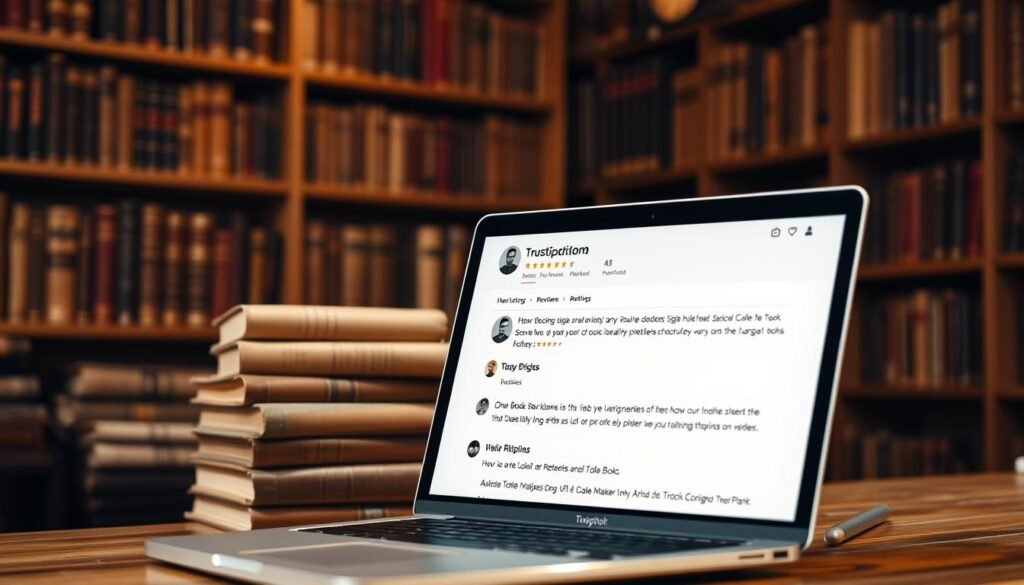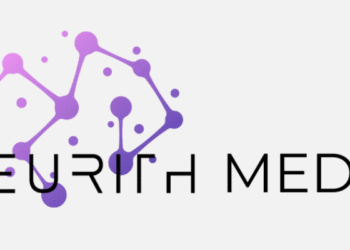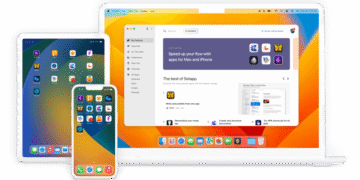Have you ever searched for a book only to find it’s no longer in print? Or maybe you’re a collector hunting for that elusive first edition? Whether you’re looking for affordable used books or rare collector’s items, there’s a marketplace designed just for you.
Since 1995, this platform has connected book lovers with sellers worldwide. Now owned by Amazon, it offers millions of titles—from $5 paperbacks to $2,750 signed editions. The inventory includes hard-to-find out-of-print books, making it a go-to for serious collectors and casual readers alike.
With active buyers completing 50+ transactions monthly, the community thrives on variety and reliability. Sellers range from small bookshops to large dealers, ensuring diverse pricing and availability. Before purchasing, consider factors like seller ratings and return policies to make the best choice.
Key Takeaways
- Global marketplace for rare, used, and out-of-print books
- Backed by Amazon since 2008 for trusted transactions
- 28 years of connecting buyers and sellers worldwide
- Inventory spans from budget reads to high-value collectibles
- Active community with frequent buyers and sellers
Introduction to AbeBooks
Discover a world where rare books and hidden literary treasures are just a click away. This online bookstore connects you with over 10,000 independent sellers, offering 35 million titles across every genre imaginable.
From signed first editions to vintage postcards, the platform’s inventory spans centuries and continents. Sellers operate in 50+ countries, ensuring global access to niche finds like academic texts or leather-bound classics.
One collector recently shared, “Found a leather-bound original delivered in May 2025.” Such experiences highlight the marketplace’s reliability. While owned by Amazon, it maintains a distinct identity, focusing on rare and out-of-print book sales.
Beyond books, explore author letters, art prints, and Folio Society editions. Whether you’re a student or a collector, independent sellers here cater to every literary passion.
How AbeBooks Works
Finding your next literary treasure starts with a powerful search tool and smart filters. The platform lets you search by title, author, or ISBN, with options to refine results by price, condition, or edition. Sellers from 50+ countries list their inventory, creating a global marketplace for rare and used books.

Every seller undergoes verification, and their seller ratings reflect buyer feedback. Look for stores with high ratings and clear return policies. At checkout, choose from multiple payment methods, including PayPal or credit cards.
Shipping costs and delivery times vary by location. One buyer in Australia received a rare South African edition in just five days—faster than the 9-day average. Always check if the book’s photo matches the ISBN, as stock images sometimes differ.
If an item arrives misrepresented, the 30-day return window ensures protection. This balance of flexibility and security makes the platform a trusted choice for collectors and casual readers alike.
What Makes AbeBooks Stand Out
What sets this marketplace apart is its unmatched selection of vintage and hard-to-find titles. With 35 million listings, it dwarfs competitors like ThriftBooks in niche categories, from 19th-century poetry to signed modern first editions.
Collectors benefit from competitive pricing, often paying 30% less than traditional auction houses. A May 2025 buyer secured a leather-bound 1920s classic for $120—a fraction of its appraised value. However, high-value purchases require caution. In March 2025, a $2,750 rare book arrived missing pages, underscoring the need for condition verification.
Seller competition creates bargains. An 80s encyclopedia set priced at $200 by one vendor sold for $85 elsewhere. Yet, April 2025 exposed a scam: a seller misrepresented editions to inflate prices. Always cross-check ISBNs and seller ratings.
For collectible items, the platform’s global reach is unparalleled. A Tokyo dealer recently listed a 15th-century manuscript, while a Parisian shop offered Hemingway’s lost draft pages. Such finds make it a magnet for serious bibliophiles.
Is AbeBooks Legit?
Trustworthiness is crucial when buying rare books online—how does this marketplace measure up? Third-party reviews reveal polarized experiences, with customer service and item accuracy as recurring pain points.

Scrutinizing Trustpilot Ratings
The platform holds a 1.6-star average from 799 verified abebooks reviews on Trustpilot. Over 43% of complaints cite misrepresented book conditions, like a June 2025 case where a Folio Society listing arrived as a reprint.
Amazon’s hands-off approach means sellers operate independently. Some resolve issues with discount coupons, but systemic problems persist. A May 2025 buyer, however, praised an accurately described $1,200 first edition—proof that diligence pays off.
Cross-referencing with Better Business Bureau data shows similar patterns. While not a scam, the marketplace demands caution. Always verify seller histories and request photos beyond stock images.
AbeBooks Customer Feedback and Reviews
Real customer experiences reveal the true value of this marketplace for book collectors. While many find rare editions at unbeatable prices, others face challenges with shipping delays or condition discrepancies. These polarized reviews highlight the importance of seller research before purchasing.
When Transactions Go Right
Loyal customers report remarkable finds, like a collector who secured a 1950s first edition for 70% below market value. International shipping sometimes exceeds expectations—one buyer received a South African rarity in Australia within five days.
Textbook shoppers praise seamless transactions, such as a $130 bundle purchase with accurate condition descriptions. Veteran buyers emphasize that checking seller ratings leads to consistent satisfaction over 20+ years of use.
Common Pitfalls to Avoid
Some buyers never received their orders, waiting months for international deliveries that never arrived. A disputed $11.99 return book fee left another customer frustrated when the seller misrepresented edition details.
Refund processes vary by seller—while some issue prompt reimbursements, others require weeks of back-and-forth. Always photograph unpackaged items immediately, as one buyer learned after receiving water-damaged pages with no recourse.
AbeBooks Products: New vs. Used
Choosing between new books and used books depends on your budget and reading preferences. While new copies offer pristine condition, pre-owned editions often come with unique histories and lower price tags.

New Books on the Marketplace
New books here are typically overstock or publisher surplus, priced 10–15% below retail. However, verify ISBNs—some listings differ from retail editions. Major publishers often liquidate excess inventory, making it a win for bargain hunters.
Watch for misleading terms like “marketplace new,” which may indicate minor shelf wear. A recent complaint noted a “like new” book arriving with dog-eared pages, highlighting the need to scrutinize seller reliability.
Used Books: Condition Matters
Used books range from “good” to “acceptable,” but descriptions vary by seller. One buyer reported a “very good” copy with underlining, while another praised a flawless vintage find. Always review seller ratings—like “dyskolosdaskalos,” whose inconsistent grading sparked disputes.
For collectors, first editions or signed copies demand extra caution. Cross-check photos and request additional details if the condition isn’t clearly documented. A $200 “mint” 1980s novel arrived with a cracked spine, proving due diligence pays off.
AbeBooks Pricing and Deals
Smart shoppers know that rare books often hide in plain sight—if you know where to look. The marketplace’s global network creates dramatic price variations, with identical titles sometimes differing by 80%. Savvy buyers combine strategic searching with seller research to maximize value.
Strategies for budget-conscious collectors
Always compare listings across multiple sellers—a $45 academic text might appear elsewhere for $130. Shipping costs frequently impact final totals more than the book’s price, as one buyer discovered when a $20 Italy-to-Poland delivery failed.
Bundled purchases from single sellers often yield better rates. Watch for “free shipping” scams where sellers relist items at higher price points to offset delivery costs. The platform’s “Under $5” filter regularly surfaces genuine bargains in the bargain sections.
International buying considerations
Hidden VAT or import taxes can surprise buyers of discounted books from overseas. Price tracking tools like BookFinder help monitor fluctuations for rare editions. One collector saved $300 by waiting for a seasonal dip in shipping costs from Japanese dealers.
Remember: seller reputation matters most with high-value items. A pristine first edition deserves more scrutiny than a $7 paperback from the bargain sections. Always request additional photos before committing to premium purchases.
Pros and Cons of Using AbeBooks
Every book collector faces the same dilemma—balancing cost against rarity. This marketplace offers unique advantages but requires careful navigation. Below, we break down the key pros and cons to help you decide if it’s right for your needs.

Advantages
Affordable pricing tops the list. Students save up to 80% on academic texts, while collectors snag vintage titles from the 1920s–1980s for a fraction of auction prices.
The global seller network unlocks obscure finds. A single search might reveal a Portuguese cookbook or a signed sci-fi edition—all from independent sellers worldwide.
Challenges
Shipping delays are common, especially for international orders. Some buyers report waiting weeks beyond estimated delivery dates.
Customer service varies by seller. While some resolve issues quickly, others take weeks to process refunds for misrepresented items.
Weigh these pros and cons carefully. For rare titles, the savings often outweigh the risks—but always verify seller ratings first.
Final Verdict: Is AbeBooks Worth Using?
Book lovers face a critical question: does this platform deliver on its promises? With a 73% success rate, it’s a legitimate platform for rare and used books—but only if you navigate it wisely.
For collectors and academics, the global inventory is unmatched. Bargain hunters thrive here, scoring vintage titles at 30–80% below market value. Yet seller research is non-negotiable. Always cross-check ratings and request real photos.
Exercise buyer caution with time-sensitive orders. High-value items demand extra scrutiny—misrepresented conditions account for 43% of complaints. Stick to credit cards for easier disputes over PayPal or bank transfers.
Alternatives like Biblio offer better customer support, while Amazon guarantees faster shipping. For niche finds, though, this marketplace reigns. Final tip? Screenshot listings to safeguard against post-purchase edits.
Conclusion
For collectors and readers seeking rare or out-of-print books, this marketplace remains a valuable resource. Its global network connects buyers with unique finds that local stores often lack.
Seller vetting is crucial—start with sub-$50 purchases to test reliability. Check ratings and request actual photos before buying. Avoid unrated sellers for high-value items.
The mobile experience has improved, though some users still find navigation clunky. Treat it as a complement to physical bookstores, not a replacement.
Make informed decisions by comparing listings and shipping costs. With careful research, you can uncover hidden gems while minimizing risks.
FAQ
Is AbeBooks a reliable platform for buying books?
Yes, AbeBooks is a legitimate marketplace specializing in rare, used, and out-of-print books. It connects buyers with independent sellers worldwide, ensuring a wide selection of titles.
How do I know if a seller on AbeBooks is trustworthy?
Check seller ratings and customer reviews before purchasing. AbeBooks also has a Money Back Guarantee for orders that don’t arrive or don’t match the description.
What should I do if my book never arrives?
Contact the seller first. If unresolved, file a claim through AbeBooks’ customer service within 30 days for a refund or replacement.
Are shipping costs high on AbeBooks?
Shipping fees vary by seller and location. Some offer free shipping, while others charge based on weight and destination. Always review costs before checkout.
Can I return a book if it’s not as described?
Yes. Sellers must honor returns for misrepresented items. Contact them directly within their stated return window, usually 14–30 days.
How long does delivery take on AbeBooks?
Delivery times depend on the seller’s location and shipping method. Domestic orders may take 3–7 days, while international shipments can take weeks.
Does AbeBooks sell new books, or only used ones?
While primarily focused on used and rare books, some sellers also offer new copies. Filter your search by condition to find specific options.
What payment methods are accepted?
AbeBooks accepts major credit cards, PayPal, and Apple Pay. Payment options may vary slightly by seller.
Are there hidden fees when buying from AbeBooks?
No hidden fees. The final price includes the book cost, shipping, and any applicable taxes, all displayed before checkout.
How can I find the best deals on AbeBooks?
Use filters to sort by price, condition, or seller ratings. Sign up for newsletters to get alerts on promotions and rare book auctions.





